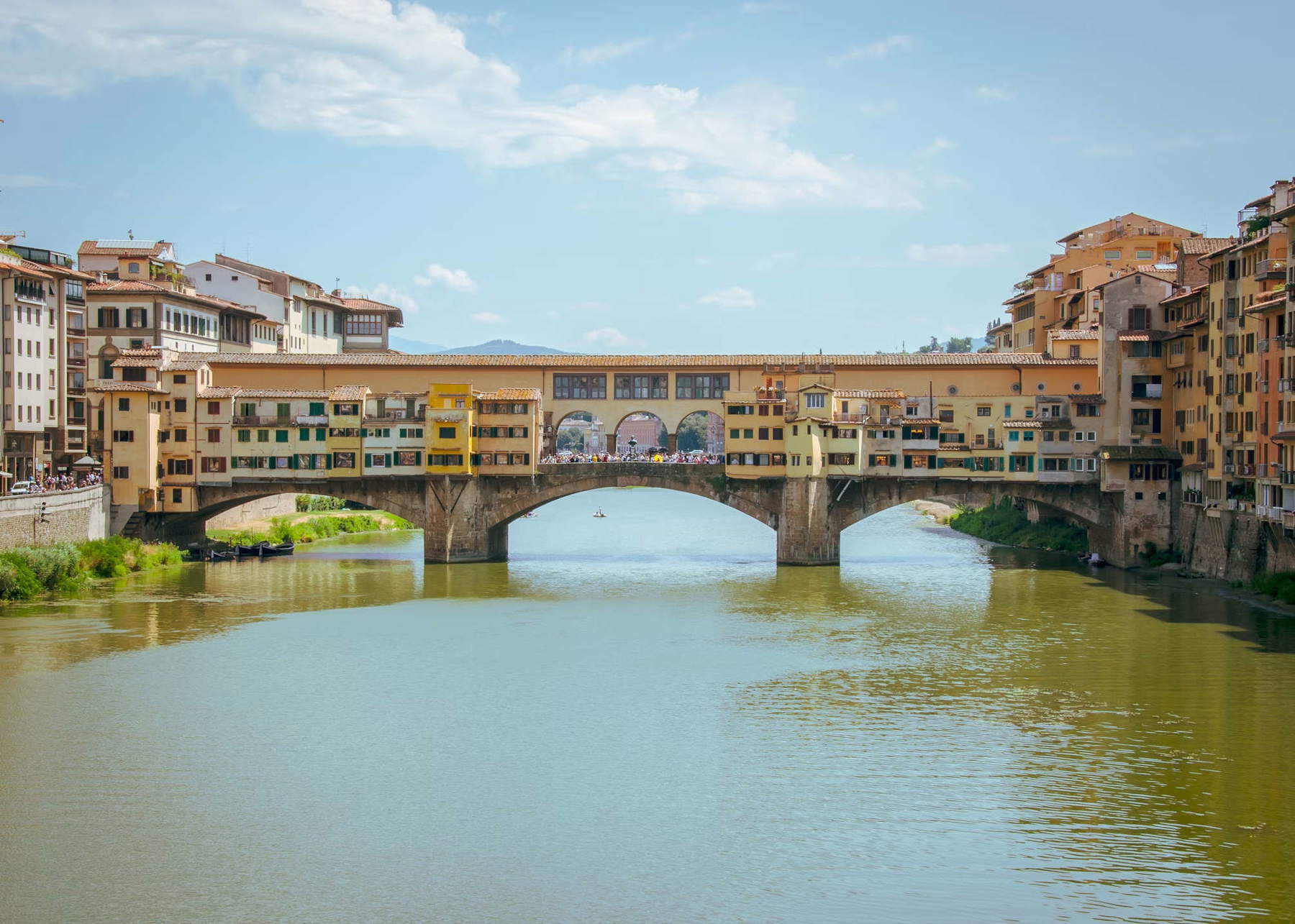In Florence, for the first time in its history, Ponte Vecchio is about to undergo a complete restoration, which has become necessary due to the condition of the most famous of the bridges connecting the two banks of theArno River that bisects the city.
The history of the Ponte Vecchio is very ancient: archaeological evidence that emerged in the 1970s showed that, a little further upstream, a crossing already existed. Instead, the construction of a wooden bridge, later rebuilt in 1177 following its destruction by a flood of the river, in masonry, with nine arches and protruding stores on both sides, dates back to medieval times. Thus, a thousand years ago, the “Pons Vetus” was already born with commercial activities as we know it today. Then, in 1333, a new reconstruction after a flood of the Arno (work was completed in 1345 with the new configuration of two piers and three lowered arches). In 1400 windows were added to the store fronts, and later, in 1495, the stores were sold to private individuals. After the Vasari Corridor was built above the stores in 1565, the businesses were given over to the resale of gold and valuables, activities that still distinguish them to this day.
In 1754 the royal conduit was built, and the stores underwent aesthetic changes. The bombings of World War II, although destroying most of the surrounding areas, spared the bridge (although the Germans made it unusable by damaging, precisely, the surrounding areas): however, in 1948, the superintendence carried out surveys of the lesions, deciding for a consolidation intervention, carried out in the 1950s. Consolidation works also followed in the following decades: in 1967 the firm Rodio & C. carried out the consolidation of piers and abutments, the seaming of the arches with metal tie-rods, the consolidation of the arches and the straightening of the longitudinal walls of the Vasarian Corridor, while in 1977 the floor of the stalls was lowered. The latest investigations date from 1994-1995.
Conservative restoration work on the Ponte Vecchio will begin in the fall. This will be the first restoration of such magnitude and technical complexity in the bridge’s centuries-long history. The restoration project will involve all elements of the bridge, including armillae, elevations, arches, piers, abutments, wing walls, paving, and parapets in the two central plazas. Concurrently, works will be carried out to improve stormwater management. The main objective will be to ensure the preservation of these elements over time, while at the same time works will be carried out to improve stormwater management. The Old Bridge, although stable and anchored, shows typical signs of exposure to weathering and river flooding.
Planned operations include disinfestation and disinfection of the surfaces to remove algae, mosses, lichens, and weeds; cleaning of materials from atmospheric deposits, chemicals carried by stormwater, salt efflorescence, and crusts from pollutants; removal of inadequate grout and substances applied in previous interventions; consolidation of materials through grouting, microstuccoing, and aesthetic presentation to bridge discontinuities and resist deteriorating agents; consolidation of cracks, fractures, and major lesions, as well as repair of deteriorated or missing joints; reconstruction of stone elements and plaster layers, where present; protection of stone, plaster, and metal surfaces; joint stitching and replacement of severely degraded elements; and restoration of stone paving and pietra serena quoins on the parapets of the small squares.
The timeline is to start work on the pavement in October/November 2024, work on the bridge piers and abutments in summer 2025, and work on the elevations in summer 2026. The total amount of the intervention is 2 million euros, with the Antinori family supporting the restoration project, contributing in particular to the part related to the bridge’s elevations, as part of a larger project to preserve and enhance the city’s historical heritage.
 |
| Florence, Ponte Vecchio prepares for first major restoration in its history |
Warning: the translation into English of the original Italian article was created using automatic tools. We undertake to review all articles, but we do not guarantee the total absence of inaccuracies in the translation due to the program. You can find the original by clicking on the ITA button. If you find any mistake,please contact us.